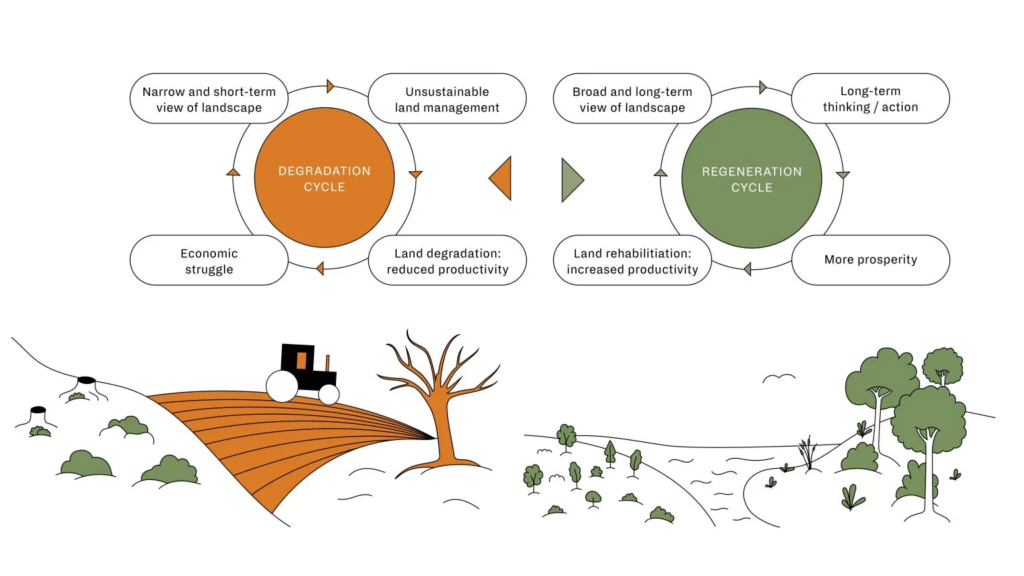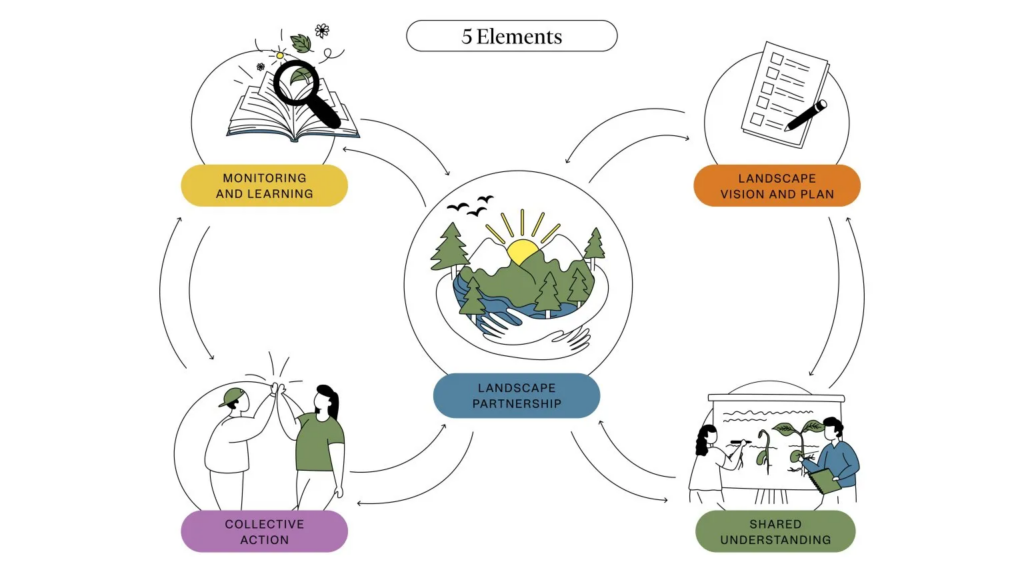
Restoring wetlands with a Holistic Landscape Approach
By Elton Mudyazvivi
Wetlands are some of our most productive ecosystems. They regulate water flows, store carbon, support biodiversity, enrich cultures, and sustain communities and economies. Without these ecosystem services, we cannot survive. They are also dynamic habitats, shaped by the water that flows through them, connecting ecosystems and social systems alike.
Wetlands around the world are threatened by a myriad of problems – from unsustainable development to agriculture and climate change. And degraded wetlands negatively impact the ecosystems and communities dependent on them. A dammed river hinders sediment flow downstream, affecting the river’s delta and floodplains. A dying mangrove forest exposes coastal communities to the threats of flooding and sea level rise. A dry peatland is a tinderbox, spreading wildfires to neighbouring ecosystems while emitting excessive amounts of carbon.
In fact, many serious issues facing the world can be traced back to degrading landscapes. If climate change, biodiversity loss, and food security are to be tackled at source, landscape restoration and conservation must be at the centre of the solution.
Yet too often, conservation efforts treat ecosystems, including wetlands, as isolated pockets of nature rather than as vital parts of larger, living, interconnected landscapes.
At Wetlands International, we believe that conserving and restoring wetlands must go hand in hand with managing the broader landscape, encompassing the broader catchment and the communities that depend on the habitat. That’s why we’ve embraced the Holistic Landscape Approach, guided by the 4 Returns Framework. It’s a practical model that helps us design restoration efforts that benefit nature, people, and economies alike.

The 4 Returns Framework provides a foundation for putting landscape restoration into action. It proposes four types of returns that healthy landscapes can deliver over the long term:
- Natural Return – Restored biodiversity, soils, and hydrology
- Social Return – Stronger communities, livelihoods, equity, and resilience
- Financial Return – Sustainable incomes and green investment opportunities
- Inspirational Return – Restored hope, connection to place, and purpose
These returns are achieved through collaborative processes that span decades, not short-term, fragmented project life cycles.
The holistic approach brings together stakeholders to develop a shared understanding, design a vision and plan for the landscape, take collective action, and carry out continuous monitoring. It is anchored in the notion that this holistic, long-term approach to restoration ensures that ecological, social, and economic outcomes reinforce each other.

Through our Wetlands 4 Resilience (W4R) programme, supported by The Swedish International Development Cooperation Agency, we are translating this approach into action across diverse landscapes — from the Sundarbans delta in Bangladesh to the wetlands of Ziway-Shalla in Ethiopia and the mangroves of Guinea-Bissau. Building on these experiences, the W4R programme will develop a W4R Model Approach — a set of guidance and tools for applying an integrated landscape approach in wetland ecosystems, showcasing best practices and the tangible results achieved across W4R sites.
Wetlands cross boundaries — ecological and institutional. We facilitate partnerships between environmental departments, local communities, farmers, local governments, and businesses, aligning their goals to protect and restore shared resources.
We engage partners to develop landscape investment plans — integrated roadmaps that combine ecological restoration with sustainable land use and inclusive governance. These propositions influence local investments decisions and help attract external funding as well as guide long-term collaboration.
Every landscape is different. We embed adaptive learning, rooted in science, into all our projects, building capacity and sharing lessons across countries to accelerate impact.
An integrated landscape approach for wetlands is not a walk in the park. Wetlands sit at the intersection of many competing needs — agriculture, urban growth, biodiversity, recreation and water security. Power imbalances can exclude vulnerable groups. And restoration takes time, sometimes even a generation to show full results. But this gives us time to monitor our interventions, learn from emerging evidence, and adapt our actions.
Complexity is exactly why the landscape approach matters. It allows us to bring everyone to the table, make trade-offs transparent, and co-create solutions that endure. Wetlands International emphasizes inclusivity and equity in every landscape, ensuring that women, Indigenous peoples, and local communities are full partners in shaping the future of their lands and waters.
By adopting the Holistic Landscape Approach, Wetlands International is helping communities and governments design pathways toward landscapes that are productive, resilient, and healthy.
Because when we restore wetlands, we don’t just heal nature. We restore hope.

